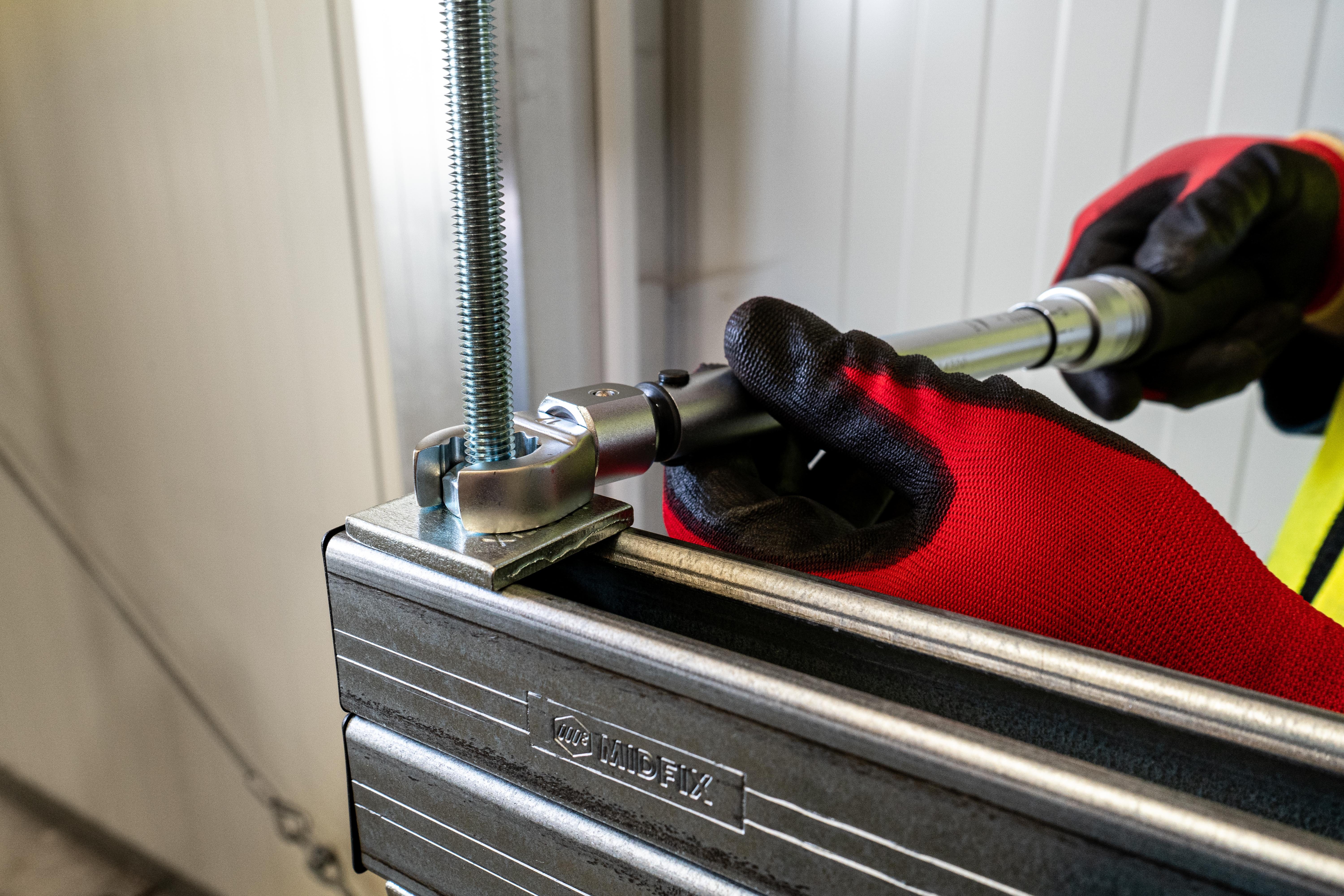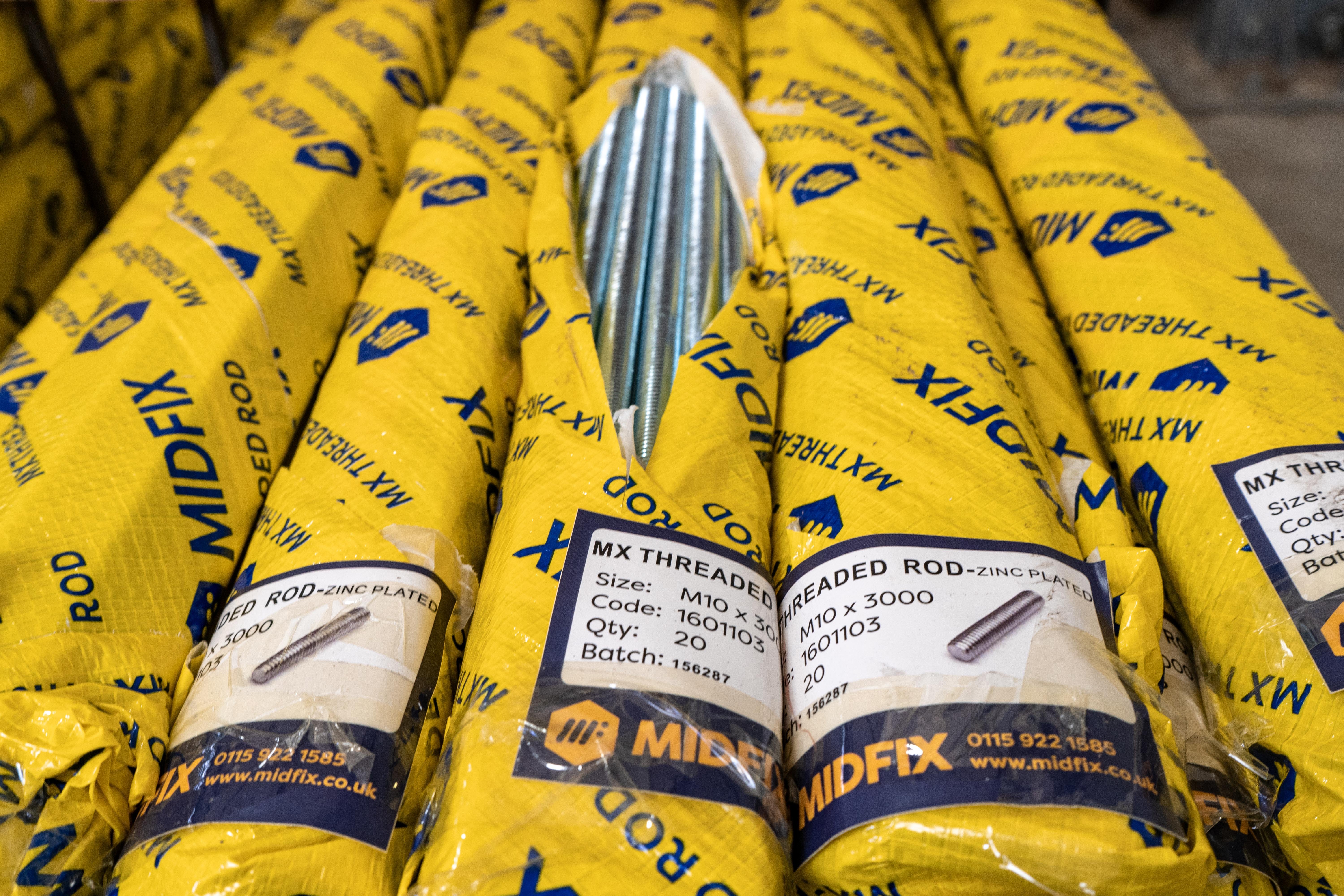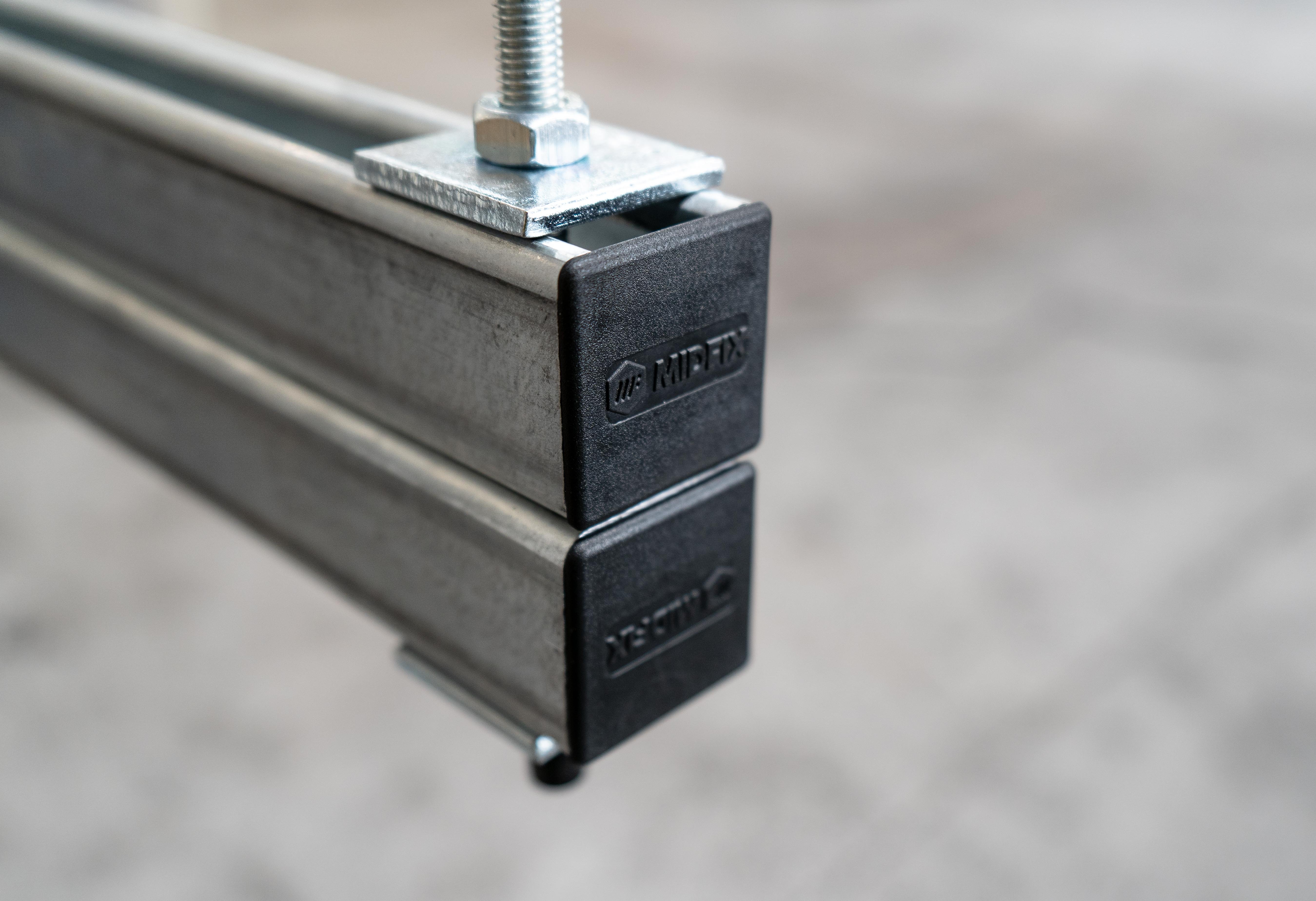As an M&E Contractor, you may have been in the industry for a while and have been installing channel bracketry for years. You may look back at your previous installations and ask yourself how many of them have failed, the answer might be very few, if any at all. Therefore, you might be thinking – “Do I really need to invest in tested channel systems?”
Well, to help you come to a decision, we have compiled a brutally honest pros and cons list of tested channel systems.
This article will cover:
- Pro #1: Protects from Bracket Assembly Failure
- Con#1: Requires Rigorous Record-Keeping
- Pro #2: Evidence
- Con #2: Cost
- Pro #3: Reduces Reworks
- Con #3: Single Source
- Pro #4: Sustainability
- Con #4: Resistance to Change
- Pros #5: Wins more Projects
Let us start on a good note…
Pro #1: Protects from Bracket Assembly Failure
The biggest talking point in support of Tested Channel Systems is that they greatly reduce, if not eliminate, the risks of bracket suspension failure.
So how does it do this?
Well, tested channel systems, as the name suggests, undergo extensive physical testing as a whole unit (or ‘system’) to demonstrate that they are fit-for-purpose, i.e., able to carry the designated service load applied to them. This means that there is reliable load data verifying that all the individual components that make your channel system are compatible together, and therefore, are less likely to collapse after correct installation.
They should also be installed by trained and therefore, ‘competent’ installers, leading to an added layer of safety, reliability and evidence.
This ensures that your channel systems meet safety and compliance standards as put forward by the Building Safety Act 2022, and protect you from monetary and reputational losses, and most importantly, onsite fatalities, that come with bracket suspension failure.
%20(1)-1.png?width=4240&height=2832&name=MicrosoftTeams-image%20(981)%20(1)-1.png)
In contrast, traditional channel is usually made up of various components that have been mixed and matched from various manufacturers and then assembled together. While you might argue that all the individual components are tested, they have unfortunately, not been tested as a ‘system’. Therefore, how can you guarantee that when combined, they can carry the service load applied to them?
Con #1: Requires Rigorous Record-Keeping
Tested channel systems usually come with a lot of comprehensive test data to back them up. While this is usually a good thing, considering that your projects now must come with the evidence you need to demonstrate safety and compliance, it does necessitate a rigorous record-keeping process. Usually, this means that as a contractor, you need to have a procedure in place to safely process and store such data and documentation. Otherwise, you are not reaping the full benefits of installing a tested channel system.
Not only that, but you also need to document the qualifications and training process done by your installers, to prove the competency of those installing and signing off your M&E installations.
This might be quite tedious and time-consuming, especially if you are a contractor that has previously relied on untested channel systems, and typically relied on just visual judgement, rather than scientific data or evidence.
-1.png?width=4934&height=2776&name=MicrosoftTeams-image%20(831)-1.png)

Pro #2: Evidence
After listening to the previous con, you might be thinking – “Why should I even bother with tested channel systems, if they’re just going to increase my workload with record-keeping?”
Well, because having evidence is now a legislative requirement!
You may have heard about the 2022 Building Safety Act; and if not, then this article will help you get a basic understanding of what it is and how it can impact the supply chain.
In short, the Building Safety Act mandates that all installations, including those by the M&E sector, provide verifiable evidence of their capability to perform their designated tasks accurately, thus prioritizing consistency, traceability, and reliability.
.png?width=3525&height=2010&name=MicrosoftTeams-image%20(813).png)
This means that simply having load data on each individual component of your bracket assembly is not reliable enough. You need to have data that proves that these individual components are tested as a system – and can handle the applied service load when put together.
This is where tested channel systems are beneficial. All the components of a tested channel system are from the same manufacturer and come with reliable test data that verifies its compatibility and effectiveness as a system.
Therefore, if a Tier 1 contractor ever asks for the evidence that demonstrates safety and compliance in your M&E installations, with tested channel systems – you already have it!
Con #2: Cost
The main reason why most M&E contractors have been opting for untested channel systems is because they feel that it may be more budget-friendly to just combine the cheapest components available in the market and put them together.
They've also typically tried to avoid the cost of training installers.
Comparatively, the upfront costs that come with purchasing and installing a tested channel system may be off-putting. Considering that most tested channel systems come with years of extensive test data, they are usually costlier compared to traditional channel.
Not only that, but tested channel systems require more labour and man-hours for installation training. And we all know time = money!
However, there are many hidden costs with untested channel systems that you may not have realised yet. The point below should elaborate on this further.
Pro #3: Reducing Reworks
While the upfront costs of purchasing and installing a tested channel system may seem unnecessary, in the long run, tested channel systems are actually more cost-effective!
This is because you have invested both time and money into ensuring that your bracket assembly is safe, compliant, and up to standard. As such, tested channel systems reward you with greater longevity and durability, by eliminating the chances of bracket assembly failure.
This means that tested channel systems usually do not need constant maintenance, reworks and replacements, thereby minimizing the costs associated with these. After all, you have already ensured that you have done everything right the first time, and your bracket assembly is built to last.

Another aspect often missed out is the cost of over-engineering when it comes to installing untested channel systems. Many M&E contractors deliberately choose over-sized and over-specced materials in the bracket assembly to ‘make sure’ it doesn’t fail. However, with tested channel systems, you can still achieve the same, if not better, safety and security, without wasting extra money and resources on unnecessary material.
As for the time and money invested in training, this can be seen as another investment that pays off in the future. Once trained, your team will effectively enhance their skillset and will have the necessary qualifications to be considered ‘competent’ installers. It’s a win-win!
Con #3: Single Source of Supply
The fear of purchasing all your components from a single source is arguably more of a misconception, rather than an actual disadvantage.
Most contractors think that committing to one source is concerning.
The first reason why is due to the limited supply chains options that provide tested channel systems. There are quite a few suppliers who take the time and effort to ensure that their channel systems undergo extensive physical testing, come with plenty of reliable load data and additional training instructions. As a result, you may have lesser supply chain options to choose from.
Not only that, but you may also worry about your selected distributor running out of stock.

While these are all valid concerns, there are more advantages to choosing a single source rather than picking from multiple sources. You can safely trust that your channel system has been extensively tested together and identifiable as coming from the same manufacturer. This offers greater reliability, identification and evidence-collection.
Another bonus point – with tested channel systems, you also save on the time spent on selecting all the individual components and their sources, as they are all coming from the same source!
Pro #4: Sustainability
An often-overlooked pro of tested channel systems is that they are sustainable in nature.
While this may not be an appealing enough point to an M&E contractor, with the Net 2050 goal inching closer every year, sustainability standards in the construction industry are becoming an important pre-requisite for many Tier 1 contractors bidding on big government contracts.
This means that Tier 1 contractors are now beginning to ask M&E contractors to demonstrate a degree of environmental awareness and consciousness in their projects.
You’re in luck! Tested channel systems, apart from ensuring safety and compliance, are also eco-friendly.
How, may you ask?
- Tested channel systems encourage purchasing from one source, which reduces the transportation required to deliver from multiple sources.
- They also reduce the material waste associated with over-engineering.
- They reduce the waste generated and resources required with constant reworking, replacements, and maintenance, as they are built to last.
Therefore, by opting for a tested channel system, you are effectively doing your part to build not just a safer, but more sustainable future.
Con #4: Resistance to Change
Perhaps the biggest roadblock that M&E contractors encounter while considering tested channel systems is having to challenge the mindsets and longstanding practices in the industry.
You might often hear, “I’ve always done it this way, so there can’t be anything wrong with it.”
It might be tempting to stick to age-old traditions such as relying on the manufacturer’s data, over-engineering, or opting for the cheapest components out there. And why not? After all, you’ve been sticking to these methods for many years, and have probably never had to face a bracket suspension failure.
But a tested channel system is not just about protecting yourself from failure, it is about proving that you are indeed protected from failure.

With the Building Safety Act being enacted, it is essential that M&E contractors are able to provide the evidence to demonstrate that their installations are safe and compliant. Tested channel systems ensure that you have the necessary evidence to back your bracket assemblies, as they come with reliable load data to prove that the entire system, not just each individual component, is fit-for purpose.
It's all about changing your mindset and prioritizing not just safety and compliance, but also evidence and traceability.
Pros #5: Wins more Projects
At the end of the day, Tested Channel Systems can protect and build your reputation as a reliable M&E contractor. This in turn, can make you appear more attractive before Tier 1 contractors and help you win bigger projects in the long run.
This is because, by opting for tested channel systems, you are demonstrating (yes, demonstrating, not just claiming) that you:
- Are adhering to safety and compliance standards as mentioned by the Building Safety Act.
- Have the necessary evidence and identification to back your projects.
- Have installations done by trained and competent installers.
- Are following sustainability guidelines in your projects.
At the end of the day, all M&E contractors wish is to attract more business. That is precisely what tested channel systems offer – a chance to become a more responsible and trustworthy subcontractor who can demonstrate compliance with safety standards.
Conclusion
In conclusion, after thoroughly examining the advantages and disadvantages of tested channel systems, it becomes evident that they may not yield immediate results, but they represent an important investment for the long term. While the allure of easy and cheaper conventional options may be tempting, they may not provide the peace of mind sought by both you and your Tier 1 contractors.
Opting for tested channel systems ensures the safety, compliance, evidence-based nature, and sustainability of your bracket assemblies – not only in the present but also in the future. By getting everything right from the outset, you can be confident that the potential of failure is minimized, and even if it does arise, you possess the necessary evidence and documentation to demonstrate adherence to safety and compliance standards.
Here is a free installer course for MX Tested Channel Systems.

